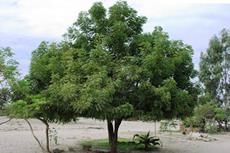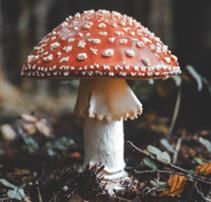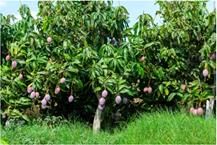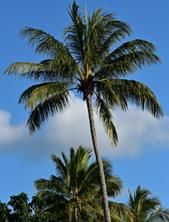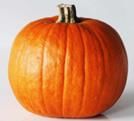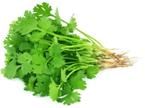All Exams >
Grade 2 >
Science for Grade 2 >
All Questions
All questions of Our Changing World for Grade 2 Exam
Which of the following is a group of wild animals only.- a)Owl, lion, whale and cat
- b)Lion, whale, tiger and horse
- c)Rhinoceros, wolf, deer and lion
- d)Fox, leopard, pig and hen
Correct answer is option 'C'. Can you explain this answer?
Which of the following is a group of wild animals only.
a)
Owl, lion, whale and cat
b)
Lion, whale, tiger and horse
c)
Rhinoceros, wolf, deer and lion
d)
Fox, leopard, pig and hen
|
|
Pranav Singh answered |
Rhinoceros, world, deer and lion represents a group of wild animals only.
Which of the following statement is true for a wild animal?- a)Wild animals depend on human for food and shelter
- b)Wild animals are not dangerous for living organisms
- c)Wild animals lives independently in the forest
- d)Wild animals cannot live without humans
Correct answer is option 'C'. Can you explain this answer?
Which of the following statement is true for a wild animal?
a)
Wild animals depend on human for food and shelter
b)
Wild animals are not dangerous for living organisms
c)
Wild animals lives independently in the forest
d)
Wild animals cannot live without humans
|
|
Yashina Kapoor answered |
- A wild animal lives independently in the forest.
- Wild animal does not depend on human for food and shelter, wild animal is dangerous for human and living organism.
- Wild animal lives without human.
Study the flow chart and choose the correct statement.
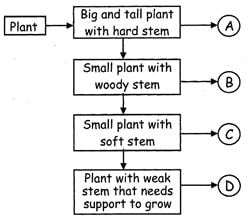
- a)A is a Rose plant
- b)B is a Hibiscus plant
- c)C is a Banyan tree
- d)D is a Shrub
Correct answer is option 'C'. Can you explain this answer?
Study the flow chart and choose the correct statement.


a)
A is a Rose plant
b)
B is a Hibiscus plant
c)
C is a Banyan tree
d)
D is a Shrub

|
Keystone Instructors answered |
- 'B' is a Hibiscus plant which is a small plant with woody stem.
Which of the following part is known as the food storehouse of the plant?- a)Stem
- b)Leaves
- c)Root
- d)Shoot
Correct answer is option 'A'. Can you explain this answer?
Which of the following part is known as the food storehouse of the plant?
a)
Stem
b)
Leaves
c)
Root
d)
Shoot
|
|
Pranav Singh answered |
Stem is the food storehouse of the plant.
What are the similarities between the plants bearing the flowers as shows?


- a)They have weak stems
- b)They have woody stem
- c)They have very big leaves
- d)They grow along the ground
Correct answer is option 'B'. Can you explain this answer?
What are the similarities between the plants bearing the flowers as shows?




a)
They have weak stems
b)
They have woody stem
c)
They have very big leaves
d)
They grow along the ground
|
|
Pranav Singh answered |
- Rose and hibiscus plants have woody stem.
Group 1: Lion, bear, tiger, elephant
Group 2: Ox, cow, horse
Q. Which of the following is correct about the given groups of animals?- a)Group 1: Domestic animals, Group 2; Wild animals
- b)Group 1: Wild animals. Group 2; Domestic animal
- c)Both Group 1 and Group 2 have Domestic animal
- d)None of these.
Correct answer is option 'B'. Can you explain this answer?
Group 1: Lion, bear, tiger, elephant
Group 2: Ox, cow, horse
Q. Which of the following is correct about the given groups of animals?
Group 2: Ox, cow, horse
Q. Which of the following is correct about the given groups of animals?
a)
Group 1: Domestic animals, Group 2; Wild animals
b)
Group 1: Wild animals. Group 2; Domestic animal
c)
Both Group 1 and Group 2 have Domestic animal
d)
None of these.
|
|
Pranav Singh answered |
Lion, bear, tiger, elephant are wild animals ox, cow, and horse are domestic animals.
Choose odd one out- a)giraffe
- b)horse
- c)donkey
- d)tiger
Correct answer is option 'D'. Can you explain this answer?
Choose odd one out
a)
giraffe
b)
horse
c)
donkey
d)
tiger
|
|
Baishali Ahuja answered |
Understanding the Odd One Out
In the given options, we need to identify which animal does not belong with the others based on certain characteristics.
Animal Classification
- Giraffe: A tall, herbivorous mammal known for its long neck.
- Horse: A domesticated mammal often used for riding and farm work, primarily herbivorous.
- Donkey: Another domesticated herbivorous mammal, closely related to horses.
- Tiger: A large, carnivorous feline that hunts for food.
Key Characteristics
- Diet:
- Giraffe, horse, and donkey are all herbivores, meaning they primarily eat plants.
- Tiger is a carnivore, which means it eats meat. This distinction makes it different from the other three.
- Domestication:
- Horse and donkey are commonly domesticated animals used by humans for various purposes.
- Giraffes are wild animals and are not typically domesticated.
- Tiger is also a wild animal and is not domesticated, but it stands apart as a predator.
Conclusion
The correct answer is option 'D' (Tiger) because:
- It is the only carnivorous animal among the listed options.
- It is not domesticated like the horse and donkey, which are integral to human activities.
In summary, the tiger’s dietary habits and its wild nature establish it as the odd one out in this list.
In the given options, we need to identify which animal does not belong with the others based on certain characteristics.
Animal Classification
- Giraffe: A tall, herbivorous mammal known for its long neck.
- Horse: A domesticated mammal often used for riding and farm work, primarily herbivorous.
- Donkey: Another domesticated herbivorous mammal, closely related to horses.
- Tiger: A large, carnivorous feline that hunts for food.
Key Characteristics
- Diet:
- Giraffe, horse, and donkey are all herbivores, meaning they primarily eat plants.
- Tiger is a carnivore, which means it eats meat. This distinction makes it different from the other three.
- Domestication:
- Horse and donkey are commonly domesticated animals used by humans for various purposes.
- Giraffes are wild animals and are not typically domesticated.
- Tiger is also a wild animal and is not domesticated, but it stands apart as a predator.
Conclusion
The correct answer is option 'D' (Tiger) because:
- It is the only carnivorous animal among the listed options.
- It is not domesticated like the horse and donkey, which are integral to human activities.
In summary, the tiger’s dietary habits and its wild nature establish it as the odd one out in this list.
Direction: Select the odd one out- a)root
- b)shoot
- c)trees
- d)leaves
Correct answer is option 'C'. Can you explain this answer?
Direction: Select the odd one out
a)
root
b)
shoot
c)
trees
d)
leaves
|
|
Pranav Singh answered |
Root, shoot and leaves are the part of plant, tree is a type of plants.
Which is these is obtained from plants?- a)Paper
- b)Animals
- c)Medicine
- d)Both (a) and (b)
Correct answer is option 'D'. Can you explain this answer?
Which is these is obtained from plants?
a)
Paper
b)
Animals
c)
Medicine
d)
Both (a) and (b)
|
|
Pranav Singh answered |
Both paper and medicines are obtained from plants.
Fruits develop from __________.- a)leaves
- b)flowers
- c)seeds
- d)stem
Correct answer is option 'B'. Can you explain this answer?
Fruits develop from __________.
a)
leaves
b)
flowers
c)
seeds
d)
stem
|
|
Pranav Singh answered |
Fruits develop from flower.
Direction: Read the passage carefully and answer the questions.
Wild animal is a term that refers to animals that are not normally domesticated. The wild animals provide useful products like ivory, honey, tusk, etc whereas domestic animals provide products like milk, meat, wool, etc. Domestic animals do very useful jobs for human beings. On the other hand wild animals help to maintain the ecological balance of nature and maintain the food chain.
Q. Which of the following is obtained from animal?- a)Milk
- b)Tusk
- c)Wool
- d)All of these
Correct answer is option 'D'. Can you explain this answer?
Direction: Read the passage carefully and answer the questions.
Wild animal is a term that refers to animals that are not normally domesticated. The wild animals provide useful products like ivory, honey, tusk, etc whereas domestic animals provide products like milk, meat, wool, etc. Domestic animals do very useful jobs for human beings. On the other hand wild animals help to maintain the ecological balance of nature and maintain the food chain.
Q. Which of the following is obtained from animal?
Wild animal is a term that refers to animals that are not normally domesticated. The wild animals provide useful products like ivory, honey, tusk, etc whereas domestic animals provide products like milk, meat, wool, etc. Domestic animals do very useful jobs for human beings. On the other hand wild animals help to maintain the ecological balance of nature and maintain the food chain.
Q. Which of the following is obtained from animal?
a)
Milk
b)
Tusk
c)
Wool
d)
All of these
|
|
Pranav Singh answered |
All of these obtain from animals.
Which of the following lives both on land and water?- a)Tiger
- b)Zebra
- c)Frog
- d)None of these
Correct answer is option 'C'. Can you explain this answer?
Which of the following lives both on land and water?
a)
Tiger
b)
Zebra
c)
Frog
d)
None of these

|
Keystone Instructors answered |
- Animal which live both on land and in water are called amphibians.
- Examples are Frogs, Crocodiles, tortoise, salamander.
Which of the following animals eat the flesh of dead animals?- a)Shark
- b)Snake
- c)Hyena
- d)None of these
Correct answer is option 'C'. Can you explain this answer?
Which of the following animals eat the flesh of dead animals?
a)
Shark
b)
Snake
c)
Hyena
d)
None of these

|
Keystone Instructors answered |
- A lone hyena feeds mostly on dead animals.
- Hyenas may consume an animal that has died of injuries, or it may steal meat from another carnivore, such as a lion.
Which of the following eat both plants and other animals as well?- a)Herbivorous
- b)Omnivorous
- c)Carnivorous
- d)Both (a) and (c)
Correct answer is option 'B'. Can you explain this answer?
Which of the following eat both plants and other animals as well?
a)
Herbivorous
b)
Omnivorous
c)
Carnivorous
d)
Both (a) and (c)
|
|
Eduskill Classes answered |
- Herbivorous animal eat only plants and plant products.
- Carnivorous eat only flesh of other animals.
- Omnivorous animals eat plants and other animals.
Ramesh went to the forest with his uncle. His uncle loves hunting deers. He started hunting what should Ramesh suggest to his uncle?- a)Deer is a food for lion so he should not kill Deers
- b)Number of deers will decrease
- c)Deer is an important animal so you can kill some other animal
- d)Both (a) and (b)
Correct answer is option 'A'. Can you explain this answer?
Ramesh went to the forest with his uncle. His uncle loves hunting deers. He started hunting what should Ramesh suggest to his uncle?
a)
Deer is a food for lion so he should not kill Deers
b)
Number of deers will decrease
c)
Deer is an important animal so you can kill some other animal
d)
Both (a) and (b)
|
|
Pranav Singh answered |
Ramesh should tell his uncle that deer is food for lion so he should not kill deers and also their number will decrease.
Which of these is an important function of the roots of a plant?- a)To absorb oxygen from the atmosphere
- b)To absorb carbon dioxide from the atmosphere
- c)To absorb water and minerals from the soil
- d)All of these
Correct answer is option 'C'. Can you explain this answer?
Which of these is an important function of the roots of a plant?
a)
To absorb oxygen from the atmosphere
b)
To absorb carbon dioxide from the atmosphere
c)
To absorb water and minerals from the soil
d)
All of these
|
|
Pranav Singh answered |
- Roots absorb water and minerals from the soil.
Direction: Select the odd one out- a)cactus
- b)rose
- c)cotton
- d)hibiscus
Correct answer is option 'A'. Can you explain this answer?
Direction: Select the odd one out
a)
cactus
b)
rose
c)
cotton
d)
hibiscus
|
|
Pranav Singh answered |
Rose, cotton and hibiscus are shrubs, cactus is a desert plant.
Which of the following animals live in holes?- a)Lizard
- b)Rat
- c)Squirrel
- d)None of these
Correct answer is option 'B'. Can you explain this answer?
Which of the following animals live in holes?
a)
Lizard
b)
Rat
c)
Squirrel
d)
None of these
|
|
Amar Basu answered |
Animals that live in holes
Introduction:
Some animals have adapted to living in holes as a way to protect themselves from predators or harsh environmental conditions. Let's explore which animals from the given options live in holes.
Analysis:
Let's analyze each option to determine which animal lives in holes:
a) Lizard:
Lizards are reptiles that can be found in various habitats, including deserts, forests, and grasslands. While certain species of lizards may seek refuge in burrows or crevices, they are not typically known for living in holes. Therefore, lizards do not fit the criteria of animals that live in holes.
b) Rat:
Rats are rodents that are known for their burrowing behavior. They dig extensive networks of tunnels and live in underground burrows, making them a perfect candidate for animals that live in holes. Rats construct complex burrow systems that provide them with shelter, protection, and a place to raise their young. Therefore, rats are animals that live in holes.
c) Squirrel:
Squirrels are small mammals that are known for their agility and ability to climb trees. While squirrels may use tree cavities or build nests in tree branches, they do not typically live in holes in the ground. Squirrels prefer elevated habitats that provide them with a better vantage point to spot predators or potential food sources. Therefore, squirrels do not live in holes.
Conclusion:
Out of the given options, only the rat is an animal that lives in holes. Rats are well adapted to living in underground burrows, which provide them with protection and shelter.
Introduction:
Some animals have adapted to living in holes as a way to protect themselves from predators or harsh environmental conditions. Let's explore which animals from the given options live in holes.
Analysis:
Let's analyze each option to determine which animal lives in holes:
a) Lizard:
Lizards are reptiles that can be found in various habitats, including deserts, forests, and grasslands. While certain species of lizards may seek refuge in burrows or crevices, they are not typically known for living in holes. Therefore, lizards do not fit the criteria of animals that live in holes.
b) Rat:
Rats are rodents that are known for their burrowing behavior. They dig extensive networks of tunnels and live in underground burrows, making them a perfect candidate for animals that live in holes. Rats construct complex burrow systems that provide them with shelter, protection, and a place to raise their young. Therefore, rats are animals that live in holes.
c) Squirrel:
Squirrels are small mammals that are known for their agility and ability to climb trees. While squirrels may use tree cavities or build nests in tree branches, they do not typically live in holes in the ground. Squirrels prefer elevated habitats that provide them with a better vantage point to spot predators or potential food sources. Therefore, squirrels do not live in holes.
Conclusion:
Out of the given options, only the rat is an animal that lives in holes. Rats are well adapted to living in underground burrows, which provide them with protection and shelter.
Which of the following animals do not live in holes?- a)Squirrel
- b)Snake
- c)Mole
- d)None of these
Correct answer is option 'A'. Can you explain this answer?
Which of the following animals do not live in holes?
a)
Squirrel
b)
Snake
c)
Mole
d)
None of these
|
|
Om Sengupta answered |
Explanation:
Introduction:
There are various animals that live in holes as part of their natural habitats. However, not all animals are adapted to living in holes. In this case, we need to identify the animal that does not live in holes among the given options.
Squirrel:
- Squirrels are small to medium-sized rodents that are known for their bushy tails and their ability to climb trees.
- While squirrels do not primarily live in holes, they may use tree cavities or build nests called dreys in the branches of trees.
- Dreys are usually made of twigs, leaves, and other materials and provide shelter for squirrels.
Snake:
- Snakes are elongated, legless reptiles that are known for their ability to slither and crawl on the ground.
- While snakes do not typically live in holes, they may seek shelter in burrows or crevices for protection or to regulate their body temperature.
- However, snakes are not dependent on holes for their survival and can be found in a variety of habitats.
Mole:
- Moles are small, burrowing mammals that are adapted to living underground.
- Moles dig tunnels and create complex burrow systems in the soil, which serve as their homes.
- These burrows have various chambers for nesting, storing food, and traveling.
- Moles have specialized adaptations such as strong forelimbs and shovel-like hands that allow them to dig efficiently.
Conclusion:
Among the given options, the animal that does not primarily live in holes is the squirrel. While squirrels may utilize tree cavities or build nests in the branches of trees, they are not dependent on holes in the ground for their survival. Both snakes and moles have adaptations that allow them to live in holes or burrows.
Introduction:
There are various animals that live in holes as part of their natural habitats. However, not all animals are adapted to living in holes. In this case, we need to identify the animal that does not live in holes among the given options.
Squirrel:
- Squirrels are small to medium-sized rodents that are known for their bushy tails and their ability to climb trees.
- While squirrels do not primarily live in holes, they may use tree cavities or build nests called dreys in the branches of trees.
- Dreys are usually made of twigs, leaves, and other materials and provide shelter for squirrels.
Snake:
- Snakes are elongated, legless reptiles that are known for their ability to slither and crawl on the ground.
- While snakes do not typically live in holes, they may seek shelter in burrows or crevices for protection or to regulate their body temperature.
- However, snakes are not dependent on holes for their survival and can be found in a variety of habitats.
Mole:
- Moles are small, burrowing mammals that are adapted to living underground.
- Moles dig tunnels and create complex burrow systems in the soil, which serve as their homes.
- These burrows have various chambers for nesting, storing food, and traveling.
- Moles have specialized adaptations such as strong forelimbs and shovel-like hands that allow them to dig efficiently.
Conclusion:
Among the given options, the animal that does not primarily live in holes is the squirrel. While squirrels may utilize tree cavities or build nests in the branches of trees, they are not dependent on holes in the ground for their survival. Both snakes and moles have adaptations that allow them to live in holes or burrows.
__________ animals helps in maintaining ecological balance.- a)Wild
- b)Domestic
- c)Both wild and domestic
- d)None of these
Correct answer is option 'A'. Can you explain this answer?
__________ animals helps in maintaining ecological balance.
a)
Wild
b)
Domestic
c)
Both wild and domestic
d)
None of these
|
|
Pranav Singh answered |
Wild animals help is maintaining ecological balance.
Oil is not abstained from which of the following plant?- a)Mango plant
- b)Sunflower plant
- c)Mustard plant
- d)Coconut plant
Correct answer is option 'A'. Can you explain this answer?
Oil is not abstained from which of the following plant?
a)
Mango plant
b)
Sunflower plant
c)
Mustard plant
d)
Coconut plant
|
|
Prateek Saini answered |
Answer:
Introduction:
In this question, we are asked to identify the plant from which oil is not abstained. We are given four options: Mango plant, Sunflower plant, Mustard plant, and Coconut plant. We need to determine which plant does not produce oil.
Explanation:
Let's analyze each option one by one:
a) Mango plant:
Mango plants do not produce oil. The fruit of the mango plant contains a single large seed, called the mango kernel or mango stone. However, this kernel does not yield oil. Mangoes are primarily consumed as a fruit and are known for their delicious taste.
b) Sunflower plant:
Sunflower plants are one of the major sources of edible oil. The seeds of the sunflower plant are highly prized for their oil content. Sunflower oil is commonly used for cooking purposes and is known for its light flavor and high smoking point.
c) Mustard plant:
Mustard plants produce oil that is commonly known as mustard oil. The seeds of the mustard plant are crushed or pressed to extract the oil. Mustard oil is widely used in cooking, particularly in Indian and Asian cuisines. It has a strong flavor and is often used for its distinctive taste and aroma.
d) Coconut plant:
Coconut plants are another significant source of oil. The coconut itself is a fruit, and the oil is extracted from the copra, which is the dried kernel of the coconut. Coconut oil is widely used for cooking, as well as for various other purposes such as skin and hair care.
Conclusion:
After analyzing all the options, we can conclude that the plant from which oil is not abstained is the Mango plant. While sunflower, mustard, and coconut plants all produce oil, the mango plant does not yield oil.
Introduction:
In this question, we are asked to identify the plant from which oil is not abstained. We are given four options: Mango plant, Sunflower plant, Mustard plant, and Coconut plant. We need to determine which plant does not produce oil.
Explanation:
Let's analyze each option one by one:
a) Mango plant:
Mango plants do not produce oil. The fruit of the mango plant contains a single large seed, called the mango kernel or mango stone. However, this kernel does not yield oil. Mangoes are primarily consumed as a fruit and are known for their delicious taste.
b) Sunflower plant:
Sunflower plants are one of the major sources of edible oil. The seeds of the sunflower plant are highly prized for their oil content. Sunflower oil is commonly used for cooking purposes and is known for its light flavor and high smoking point.
c) Mustard plant:
Mustard plants produce oil that is commonly known as mustard oil. The seeds of the mustard plant are crushed or pressed to extract the oil. Mustard oil is widely used in cooking, particularly in Indian and Asian cuisines. It has a strong flavor and is often used for its distinctive taste and aroma.
d) Coconut plant:
Coconut plants are another significant source of oil. The coconut itself is a fruit, and the oil is extracted from the copra, which is the dried kernel of the coconut. Coconut oil is widely used for cooking, as well as for various other purposes such as skin and hair care.
Conclusion:
After analyzing all the options, we can conclude that the plant from which oil is not abstained is the Mango plant. While sunflower, mustard, and coconut plants all produce oil, the mango plant does not yield oil.
Which of the following is not a wild animal?- a)Tiger
- b)Deer
- c)Fox
- d)Goat
Correct answer is option 'D'. Can you explain this answer?
Which of the following is not a wild animal?
a)
Tiger
b)
Deer
c)
Fox
d)
Goat
|
|
Pranav Singh answered |
Goat is not a wild animal. Tiger, beer, and Fox are wild animals.
The leaves of ___________ are used as food.- a)anion
- b)cabbage
- c)eggs
- d)ginger
Correct answer is option 'B'. Can you explain this answer?
The leaves of ___________ are used as food.
a)
anion
b)
cabbage
c)
eggs
d)
ginger
|
|
Pranav Singh answered |
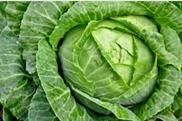
- The leaves of cabbage are used as food.
Find the incorrect match- a)Cow - herbivorous
- b)Tiger - omnivorous
- c)Leopard - carnivorous
- d)Giraffe - herbivorous
Correct answer is option 'B'. Can you explain this answer?
Find the incorrect match
a)
Cow - herbivorous
b)
Tiger - omnivorous
c)
Leopard - carnivorous
d)
Giraffe - herbivorous
|
|
Pranav Singh answered |
Tiger - omnivorous is an incorrect match. Tiger is a carnivorous animal.
Tiger eats only grass.- a)True
- b)False
Correct answer is option 'B'. Can you explain this answer?
Tiger eats only grass.
a)
True
b)
False
|
|
Pranav Singh answered |
Tigers are requisite carnivores meaning that they eat Meat and animal byproducts.
Direction: Select the odd one out- a)money plant
- b)grapevine
- c)bean
- d)pumpkin
Correct answer is option 'D'. Can you explain this answer?
Direction: Select the odd one out
a)
money plant
b)
grapevine
c)
bean
d)
pumpkin

|
Kds Coaching answered |
Money plant, grapevine, and bean are all climbers—plants that need support to grow upward. Pumpkin is a creeper, which means it spreads along the ground and does not climb upward. Therefore, the odd one out is pumpkin.
White tiger is an endangered animal.- a)True
- b)False
Correct answer is option 'A'. Can you explain this answer?
White tiger is an endangered animal.
a)
True
b)
False
|
|
Pranav Singh answered |
The White Tiger is a Bengal Tiger which is a species listed by the IUCN as Endangered and therefore severely threatened in its surrounding environment.
Direction: Select the odd one out- a)table
- b)chair
- c)door
- d)medicine
Correct answer is option 'D'. Can you explain this answer?
Direction: Select the odd one out
a)
table
b)
chair
c)
door
d)
medicine
|
|
Pranav Singh answered |
Table, chair and doors are obtained from wood.
Small plants with weak stems are called herbs. Which of the these is a herb?- a)Tulsi
- b)Apple
- c)Gulmohar
- d)Grapevine
Correct answer is option 'A'. Can you explain this answer?
Small plants with weak stems are called herbs. Which of the these is a herb?
a)
Tulsi
b)
Apple
c)
Gulmohar
d)
Grapevine

|
Kds Coaching answered |
- Tulsi, also known as holy basil, is a small plant with a soft stem, making it a herb.
- Herbs are typically characterized by their aromatic properties and are often used in cooking or for medicinal purposes.
- In contrast, apple, gulmohar, and grapevine are larger plants or trees, classified as shrubs or woody plants.
Direction: Read the passage carefully and answer the questions.
Wild animal is a term that refers to animals that are not normally domesticated. The wild animals provide useful products like ivory, honey, tusk, etc whereas domestic animals provide products like milk, meat, wool, etc. Domestic animals do very useful jobs for human beings. On the other hand wild animals help to maintain the ecological balance of nature and maintain the food chain.
Q. Which of the following products is not provided by wild animals?
- a)Ivory
- b)Mutton
- c)Tusk
- d)Honey
Correct answer is option 'B'. Can you explain this answer?
Direction: Read the passage carefully and answer the questions.
Wild animal is a term that refers to animals that are not normally domesticated. The wild animals provide useful products like ivory, honey, tusk, etc whereas domestic animals provide products like milk, meat, wool, etc. Domestic animals do very useful jobs for human beings. On the other hand wild animals help to maintain the ecological balance of nature and maintain the food chain.
Q. Which of the following products is not provided by wild animals?
Wild animal is a term that refers to animals that are not normally domesticated. The wild animals provide useful products like ivory, honey, tusk, etc whereas domestic animals provide products like milk, meat, wool, etc. Domestic animals do very useful jobs for human beings. On the other hand wild animals help to maintain the ecological balance of nature and maintain the food chain.
Q. Which of the following products is not provided by wild animals?
a)
Ivory
b)
Mutton
c)
Tusk
d)
Honey
|
|
Pranav Singh answered |
Mutton is obtained from domestic animals
Direction: Read the passage carefully and answer the questions.
Wild animal is a term that refers to animals that are not normally domesticated. The wild animals provide useful products like ivory, honey, tusk, etc whereas domestic animals provide products like milk, meat, wool, etc. Domestic animals do very useful jobs for human beings. On the other hand wild animals help to maintain the ecological balance of nature and maintain the food chain.
Q. Which of the following statements is true?- a)Wild animals are friendly.
- b)Wild animals are dangerous.
- c)Wild animals can be domesticated easily.
- d)Wild animals include cow, deer, ox.
Correct answer is option 'B'. Can you explain this answer?
Direction: Read the passage carefully and answer the questions.
Wild animal is a term that refers to animals that are not normally domesticated. The wild animals provide useful products like ivory, honey, tusk, etc whereas domestic animals provide products like milk, meat, wool, etc. Domestic animals do very useful jobs for human beings. On the other hand wild animals help to maintain the ecological balance of nature and maintain the food chain.
Q. Which of the following statements is true?
Wild animal is a term that refers to animals that are not normally domesticated. The wild animals provide useful products like ivory, honey, tusk, etc whereas domestic animals provide products like milk, meat, wool, etc. Domestic animals do very useful jobs for human beings. On the other hand wild animals help to maintain the ecological balance of nature and maintain the food chain.
Q. Which of the following statements is true?
a)
Wild animals are friendly.
b)
Wild animals are dangerous.
c)
Wild animals can be domesticated easily.
d)
Wild animals include cow, deer, ox.
|
|
Pranav Singh answered |
Wild animals are dangerous.
Study the given figure. Which of the following best represents X and Y?

- a)X---- Mustard, Y ---- Sunflower
- b)X---- Coconut, Y ----- Sunflower
- c)X---- Sunflower, Y ----- Groundnut
- d)X---- Groundunt, Y ----- Mustard
Correct answer is option 'B'. Can you explain this answer?
Study the given figure. Which of the following best represents X and Y?


a)
X---- Mustard, Y ---- Sunflower
b)
X---- Coconut, Y ----- Sunflower
c)
X---- Sunflower, Y ----- Groundnut
d)
X---- Groundunt, Y ----- Mustard

|
Tutorpedia Coaching answered |
X-Coconut, Y-Sunflower.
Chapter doubts & questions for Our Changing World - Science for Grade 2 2025 is part of Grade 2 exam preparation. The chapters have been prepared according to the Grade 2 exam syllabus. The Chapter doubts & questions, notes, tests & MCQs are made for Grade 2 2025 Exam. Find important definitions, questions, notes, meanings, examples, exercises, MCQs and online tests here.
Chapter doubts & questions of Our Changing World - Science for Grade 2 in English & Hindi are available as part of Grade 2 exam.
Download more important topics, notes, lectures and mock test series for Grade 2 Exam by signing up for free.
Science for Grade 2
16 videos|81 docs|26 tests
|

Contact Support
Our team is online on weekdays between 10 AM - 7 PM
Typical reply within 3 hours
|
Free Exam Preparation
at your Fingertips!
Access Free Study Material - Test Series, Structured Courses, Free Videos & Study Notes and Prepare for Your Exam With Ease

 Join the 10M+ students on EduRev
Join the 10M+ students on EduRev
|

|
Create your account for free
OR
Forgot Password
OR
Signup on EduRev and stay on top of your study goals
10M+ students crushing their study goals daily

